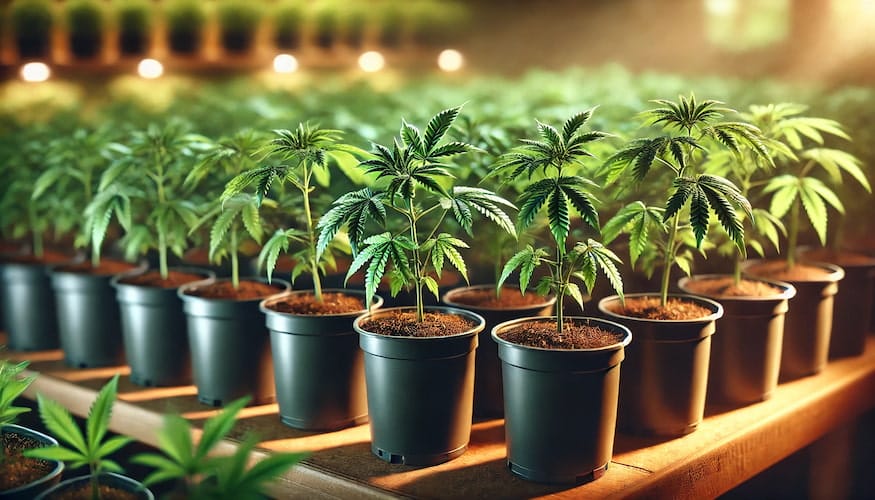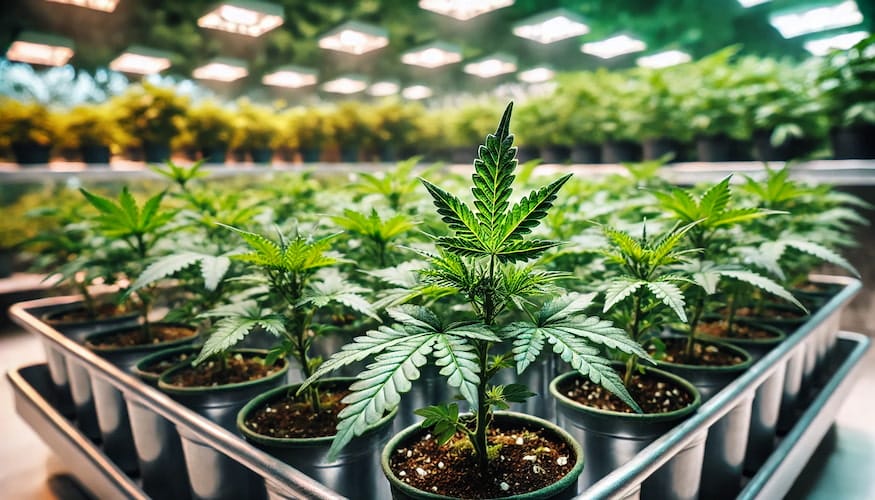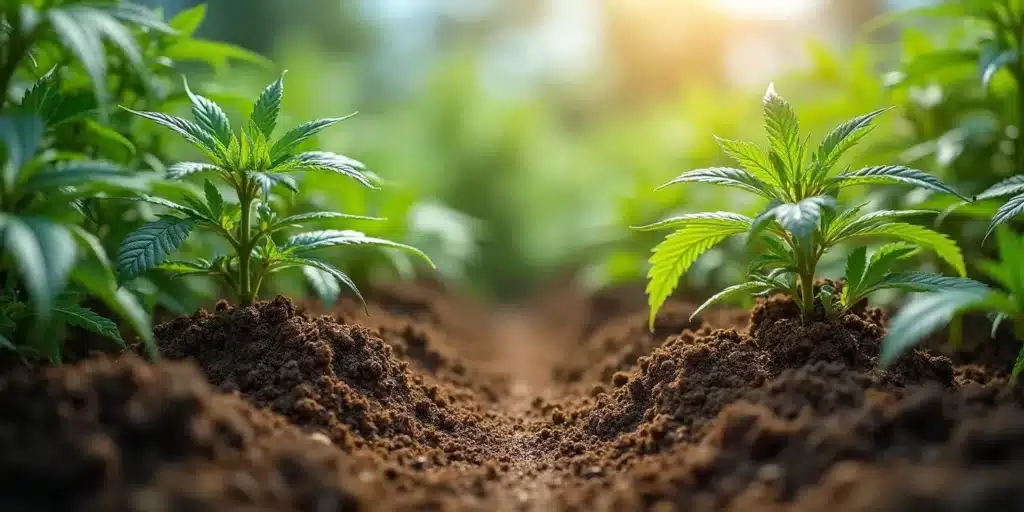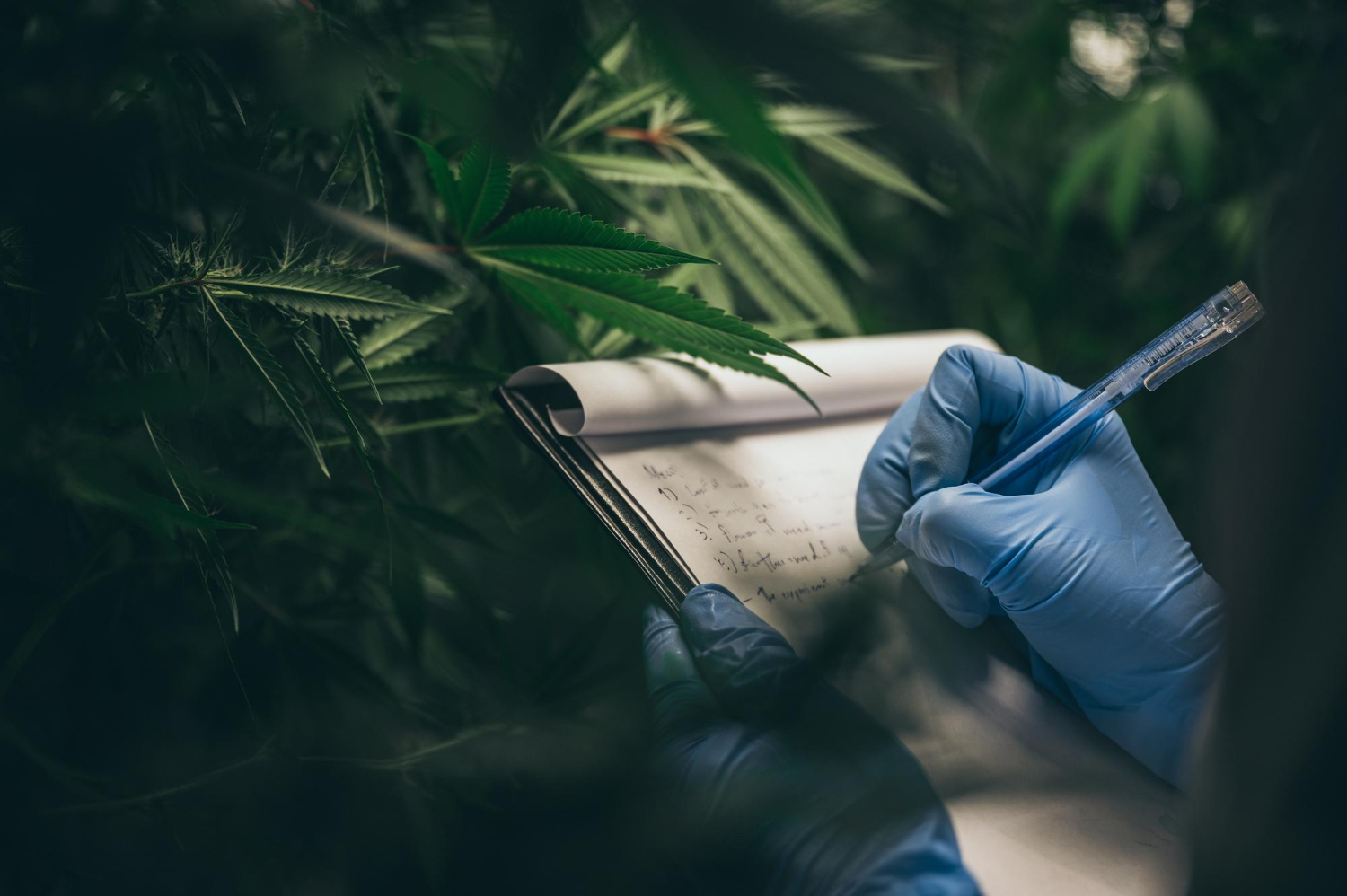Rooting cannabis clones is a critical step in the propagation process, determining whether your cuttings will grow into healthy, productive plants. In 2025, cultivators have more tools, techniques, and environmental controls than ever before, allowing for higher success rates and faster root development. Whether you’re growing for personal use or managing a commercial facility, mastering the art of rooting is essential to maintaining consistent genetics and maximising yields. This guide covers the most effective rooting methods, the conditions that promote strong root systems, and best practices to avoid common mistakes.
Rockwool Cubes for Reliable Rooting

Rockwool cubes remain one of the most popular mediums for cannabis cloning due to their excellent aeration and water retention properties. Made from spun volcanic rock, these cubes provide a sterile, inert environment that prevents nutrient imbalances during the early rooting stage. Cuttings are inserted into pre-soaked cubes with a pH-adjusted water solution, often supplemented with a mild rooting hormone. The high porosity allows oxygen to reach developing roots while keeping them evenly moist. Growers favour rockwool for its consistency and ease of transplanting into larger hydroponic or soil-based systems once roots emerge.
Coco Coir and Peat Plugs for Organic-Focused Growers
For cultivators seeking a more sustainable or organic-friendly medium, coco coir plugs and peat pellets offer an effective alternative to synthetic options. These materials are biodegradable and provide a naturally aerated structure that supports root growth while maintaining moisture. Coco coir is particularly popular because it is renewable and resists compaction, allowing roots to spread freely. Pre-moistened plugs can be dipped in rooting hormone before cuttings are inserted, and their soft texture makes them ideal for delicate stems. They also integrate seamlessly into soil or soilless mixes, reducing transplant shock when clones are moved into their final containers.
Aeroponic Cloning for Rapid Root Development
Aeroponic systems have become a preferred method for growers who want the fastest possible rooting times. In these setups, cuttings are suspended in an enclosed chamber while nutrient-rich water is misted directly onto the stem base at regular intervals. This method provides maximum oxygenation to developing roots, which can lead to visible root formation in as little as four to seven days. While aeroponics requires more upfront investment and maintenance, it offers superior control over environmental factors and is highly efficient for large-scale cloning operations. Proper cleaning and sterilisation of the system are essential to prevent pathogen buildup.
Maintaining Ideal Environmental Conditions
Regardless of the rooting method used, maintaining the right environmental conditions is crucial for clone survival and success. A humidity level between 70% and 80% prevents excessive water loss from leaves while roots are developing, while temperatures between 20°C and 25°C support metabolic processes. Low-intensity lighting, such as fluorescent or LED grow lights, should be provided on an 18-hour cycle to stimulate photosynthesis without stressing the cuttings. A gentle air exchange ensures fresh CO₂ is available without creating drying drafts. Many growers use humidity domes or propagation tents to keep conditions stable during the first critical weeks.
Avoiding Common Rooting Mistakes
Even with the right setup, cloning can fail if certain errors are not avoided. Taking cuttings from unhealthy or stressed mother plants greatly reduces rooting potential, as does using dull or contaminated cutting tools that damage stem tissue. Overwatering can suffocate roots before they form, while inadequate humidity leads to wilting and nutrient loss. Introducing clones to strong lighting too soon can also stress them and slow root growth. By following sterile handling practices, using appropriate mediums, and monitoring environmental stability, growers can dramatically improve cloning success rates and shorten the time to transplant readiness.
Transitioning Rooted Clones to Vegetative Growth

Once clones have established visible roots—usually within 7 to 14 days depending on the method—it’s time to prepare them for full vegetative growth. This involves gradually lowering humidity to around 60% to harden off the plants, increasing light intensity to encourage stronger growth, and introducing a mild vegetative nutrient solution to support development. Transplanting into larger containers should be done carefully to avoid damaging the fragile root system. A smooth transition at this stage ensures clones continue to grow vigorously, maintaining the genetic integrity and high yield potential of their mother plants.




Leave a Reply